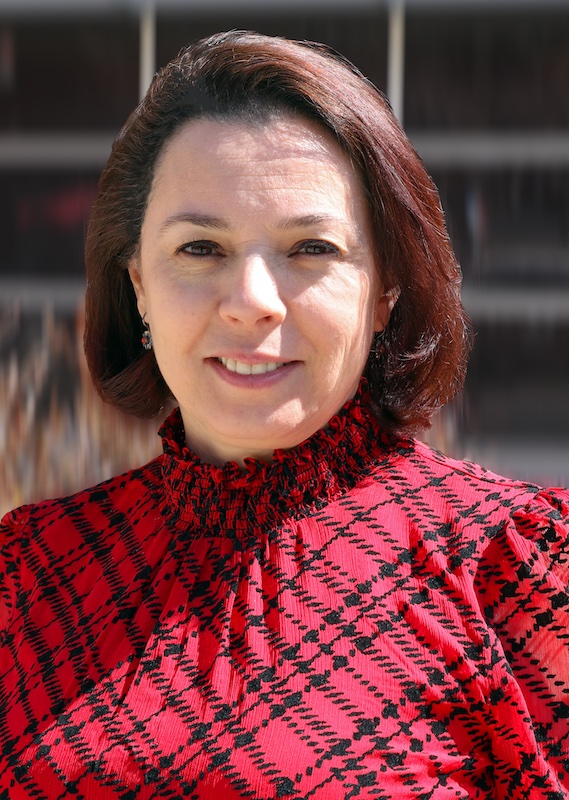Sihem Boudina
Professor of Nutrition and Integrative Physiology, Adjunct Associate Professor of Biochemistry, and Adjunct Associate Professor of Internal Medicine
Director of the Metabolic Phenotyping Core Facility
Obesity, adipose tissue, mitochondria, cardiovascular disease, autophagy

Molecular Biology Program
Education
B.S. University of Science and Technology, Algeria
M.S. University of Bordeaux 2, France
Ph.D. University of Bordeaux 2, France
Research
About 47 million Americans are living with cardiometabolic diseases such as hypertension, obesity, diabetes, and non-alcoholic fatty liver disease. These conditions often co-exist, increasing the risk of morbidity and mortality. Unfortunately, the development and progression of these diseases is not yet completely understood. The Boudina Lab conducts translational research that contributes to this knowledge gap by studying the molecular mechanisms driving obesity, cardiometabolic disease, and cardiomyopathy with a special emphasis on mitochondrial energetics and autophagy. Our goal is to develop a deeper understanding of the development and progression of cardiometabolic diseases to identify advanced therapeutics to lessen the disease burden on millions of individuals and our society.
References
- Han YH, Buffolo M, Pires KM, Pei S, Scherer PE, Boudina S. Adipocyte-Specific Deletion of Manganese Superoxide Dismutase Protects from Diet-Induced Obesity Via Increased Mitochondrial Uncoupling and Biogenesis. Diabetes. 2016 PMID: 27284109
- Boudina S, Graham TE. Mitochondrial function/dysfunction in white adipose tissue. Exp Physiol. 2014 Sep;99(9):1168-78. PMID: 25128326.
- Silva FJ, Holt DJ, Vargas V, Yockman J, Boudina S, Atkinson D, Grainger DW, Revelo MP, Sherman W, Bull DA, Patel AN. Metabolically active human brown adipose tissue derived stem cells. Stem Cells. 2014 Feb;32(2):572-81. PMID: 24420906.
- Pires KM, Ilkun O, Valente M, Boudina S. Treatment with a SOD mimetic reduces visceral adiposity, adipocyte death, and adipose tissue inflammation in high fat-fed mice. Obesity (Silver Spring). 2014 Jan;22(1):178-87. PMCID: PMC3758415.
- Fullmer TM, Pei S, Zhu Y, Sloan C, Manzanares R, Henrie B, Pires KM, Cox JE, Abel ED, Boudina S. Insulin suppresses ischemic preconditioning-mediated cardioprotection through Akt-dependent mechanisms. J Mol Cell Cardiol. 2013 Nov;64:20-9. PMCID: PMC3835741.
- lkun O, Boudina S. Cardiac dysfunction and oxidative stress in the metabolic syndrome: an update on antioxidant therapies. Curr Pharm Des. 2013;19(27):4806-17. Review. PMCID: PMC3856187.
- Dodson MV, Boudina S, Albrecht E, Bucci L, Culver MF, Wei S, Bergen WG, Amaral AJ, Moustaid-Moussa N, Poulos S, Hausman GJ. A long journey to effective obesity treatments: is there light at the end of the tunnel? Exp Biol Med (Maywood). 2013 May;238(5):491-501. PMID: 23856900.
- Boudina S. Cardiac aging and insulin resistance: could insulin/insulin-like growth factor (IGF) signaling be used as a therapeutic target? Curr Pharm Des. 2013;19(32):5684-94. Review. PMCID: PMC3883087.
- Boudina S, Han YH, Pei S, Tidwell TJ, Henrie B, Tuinei J, Olsen C, Sena S, Abel ED. UCP3 regulates cardiac efficiency and mitochondrial coupling in high fat-fed mice but not in leptin-deficient mice. Diabetes. 2012 Dec;61(12):3260-9. PMCID: PMC3501860.
- Bricker DK, Taylor EB, Schell JC, Orsak T, Boutron A, Chen YC, Cox JE, Cardon CM, Van Vranken JG, Dephoure N, Redin C, Boudina S, Gygi SP, Brivet M, Thummel CS, Rutter J. A mitochondrial pyruvate carrier required for pyruvate uptake in yeast, Drosophila, and humans. Science. 2012 Jul 6;337(6090):96-100. PMCID: PMC3690818.
- Boudina S, Sena S, Sloan C, Tebbi A, Han YH, O’Neill BT, Cooksey RC, Jones D, Holland WL, McClain DA, Abel ED. Early mitochondrial adaptations in skeletal muscle to diet-induced obesity are strain dependent and determine oxidative stress and energy expenditure but not insulin sensitivity. Endocrinology. 2012 Jun;153(6):2677-88. PMCID: PMC3359615.
- Li Y, Wende AR, Nunthakungwan O, Huang Y, Hu E, Jin H, Boudina S, Abel ED, Jalili T. Cytosolic, but not mitochondrial, oxidative stress is a likely contributor to cardiac hypertrophy resulting from cardiac specific GLUT4 deletion in mice. FEBS J. 2012 Feb;279(4):599-611. PMCID: PMC3267000.
- Bugger H, Riehle C, Jaishy B, Wende AR, Tuinei J, Chen D, Soto J, Pires KM, Boudina S, Theobald HA, Luptak I, Wayment B, Wang X, Litwin SE, Weimer BC, Abel ED. Genetic loss of insulin receptors worsens cardiac efficiency in diabetes. J Mol Cell Cardiol. 2012 May;52(5):1019-26. PMCID: PMC3327790.
- Ishiwata T, Orosz A, Wang X, Mustafi SB, Pratt GW, Christians ES, Boudina S, Abel ED, Benjamin IJ. HSPB2 is dispensable for the cardiac hypertrophic response but reduces mitochondrial energetics following pressure overload in mice. PLoS One. 2012;7(8):e42118. PMCID: PMC3411653.
